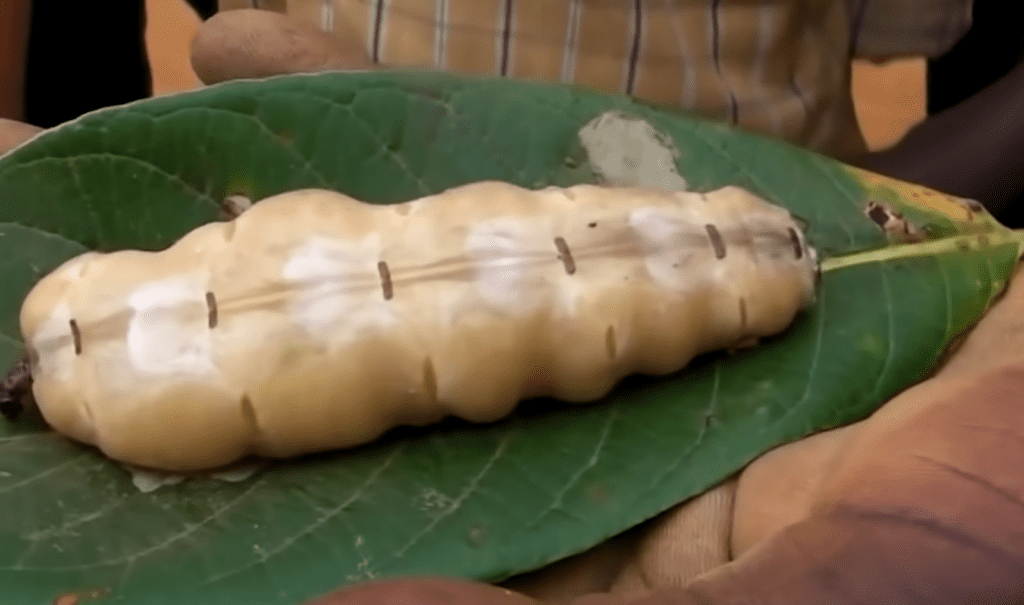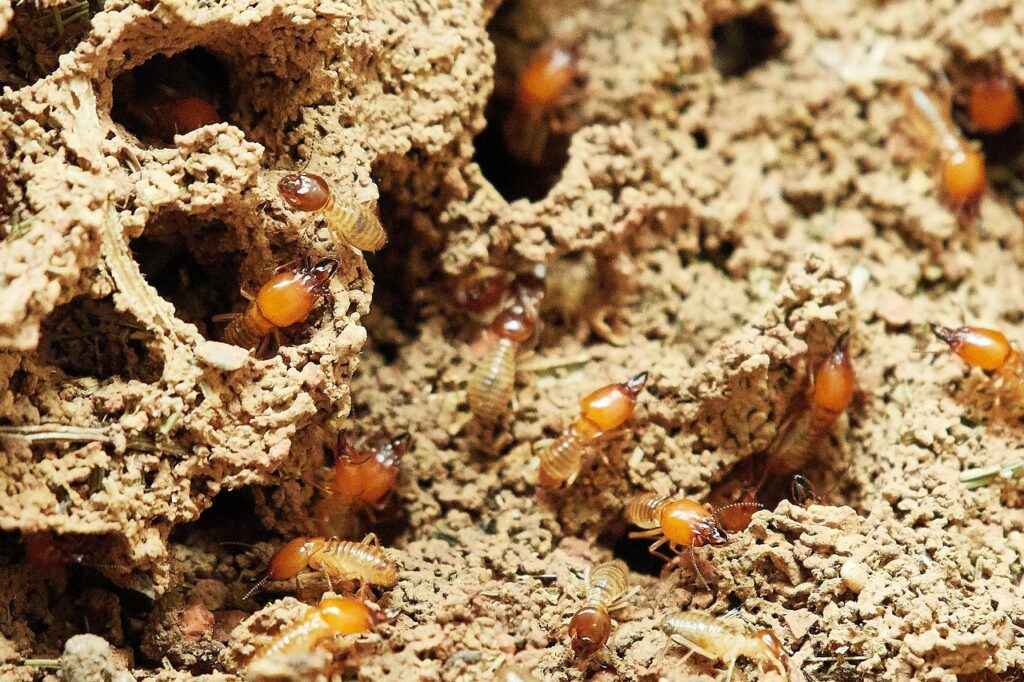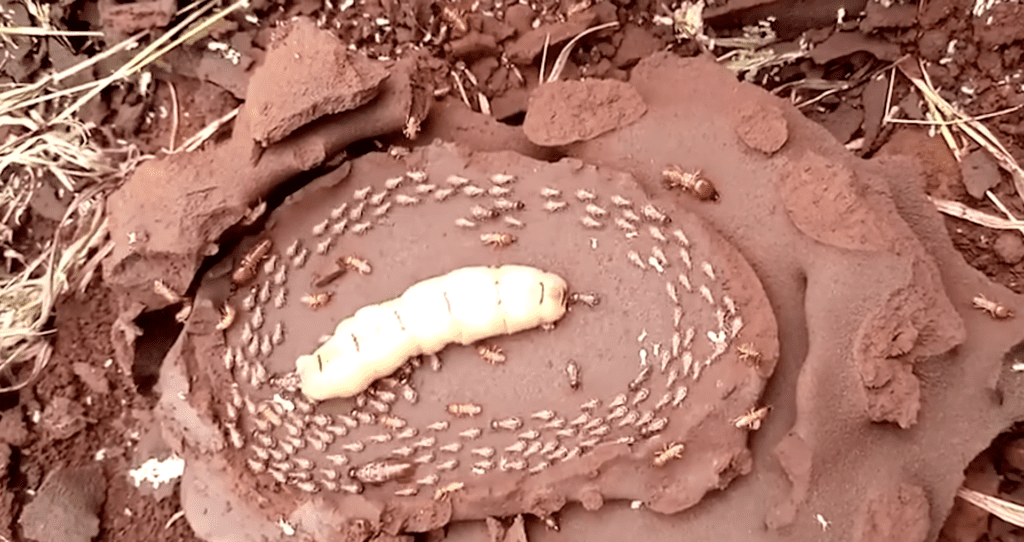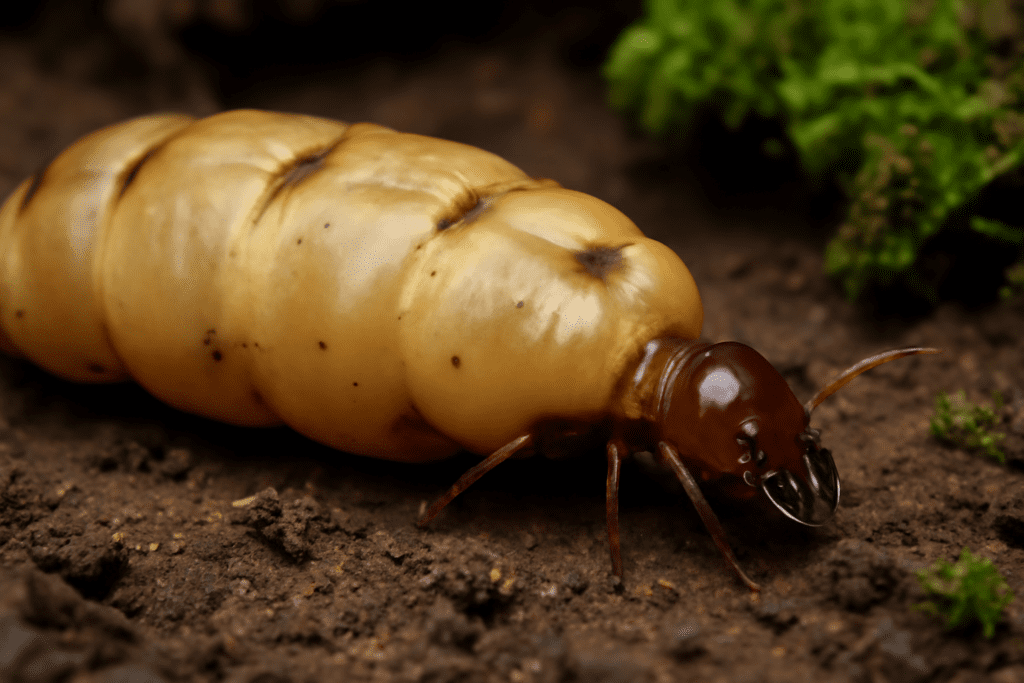A termite queen holds the title of one of nature’s most prolific egg producers, capable of laying up to 30,000 eggs per day and millions over her lifetime. Ensuring the survival and expansion of her colony, she can live up to an astonishing 50 years, far surpassing most insect lifespans. Getting to know the termite queen is downright intriguing and a game-changer for stopping these wood-munching pests in their tracks. This guide digs into her wild biology, her starring role in the colony, and the chinks in her armor, giving you real-world tips to keep your home safe from their sneaky destruction. This info could save you, keep reading!
How Many Eggs Can a Termite Queen Lay?
Some species of termite queens can produce up to 30,000 eggs daily—a staggering figure that translates to over 10 million eggs annually. This prolific reproduction fuels rapid colony growth, making termite infestations challenging to control if left unchecked. Egg production varies by species, but constant fertility is a hallmark of termite queens, enabling colonies to outcompete predators and thrive in diverse environments.

Comparing Termite Queens to Other Insect Queens
| Insect Queen | Daily Egg Production | Lifespan | Colony Size |
|---|---|---|---|
| Termite Queen | Up to 30,000 eggs | 20–50 years | Millions |
| Honeybee Queen | 1,500–2,000 eggs | 2–5 years | 20,000–80,000 |
| Ant Queen | Up to 10,000 eggs | 10–30 years | Thousands to millions |
Egg production varies across species, but constant fertility is a defining trait of termite queens. Their ability to maintain such prolific reproduction ensures the colony grows large enough to outcompete predators and thrive in diverse conditions.
The Social Structure of a Termite Colony
The termite queen is the heart of a highly organized society, with each caste playing a specific role to ensure colony survival. Understanding this hierarchy reveals her critical influence:
- Workers: Feed and groom the queen, maintain the nest, and care for eggs and young. They also build mud tubes to protect the colony.
- Soldiers: Defend the colony against predators like ants, using powerful mandibles or chemical secretions.
- Alates: Winged reproductives that leave to form new colonies. Some become future queens or kings.
- King: The queen’s mate, who remains by her side to fertilize eggs throughout her life.
The queen regulates this system through pheromones, chemical signals that control caste development and behavior. This intricate coordination allows colonies to grow to millions of termites, all dependent on her reproductive output.

What happens if a termite queen dies? The queen’s death disrupts the complicated hierarchy of the colony. Without a reproductive figure, the colony often falls apart, as no other termite is equipped to take on her role. This collapse emphasizes her central role in the survival of her millions-strong empire.
The Intriguing Life Cycle of a Termite Queen
The termite queen life cycle begins when a fertile queen establishes her colony after she sheds her wings, transitioning from her brief life as a flying termite queen (alate). These queens start small but soon grow in size, both physically and in their level of influence. Mature queens develop an elongated, bulbous abdomen to accommodate their reproductive organs, making them the largest termites in their colonies.
Can Queen Termites Move?
Once established, a termite queen rarely moves from her nesting chamber. Her enormous size and immobility are a result of evolution, allowing her to focus solely on reproduction. Worker termites serve her completely, feeding her and removing eggs for distribution throughout the colony. Termite queen size is impressive; some species, like Macrotermes bellicosus, grow over 10 centimeters long, dwarfing other members of the colony.
Flying Termite Queens: A Warning Sign

Why do flying termites suddenly appear? These winged termites, or alates, are queens and kings seeking mates to start new colonies. Spotting them around your property signals a potential termite problem, as a new colony may soon take root. Acting quickly—such as contacting a pest control professional—is crucial to prevent infestations.
Remarkable Longevity
A termite queen’s lifespan of 20 to 50 years far exceeds most insects. Her longevity stems from a low metabolism, a stress-free environment, and constant care from workers. This extended life ensures her colony’s stability, allowing it to persist for decades if undisturbed.
Species-Specific Termite Queens
Termite queens vary by species, each adapted to specific environments. Here are key examples relevant to homeowners, especially in the U.S.:
- Subterranean Termites (Reticulitermes spp.): Queens are smaller (about 1–2 cm) but produce thousands of eggs daily. Their colonies, often hidden in soil or walls, cause significant home damage.
- Drywood Termites (Incisitermes spp.): Queens live within wood, making infestations harder to detect. They lay fewer eggs but thrive without soil contact.
- Dampwood Termites (Zootermopsis spp.): Larger queens prefer moist wood, common in coastal areas. Their colonies are smaller but still destructive.
A pest control expert must know these differences, as it helps tailor control methods to the specific threat. If your case is termite infestation, let IPest Control Inc. to deploy a WDO inspection in your residential or commercial space.
Ecological Role and Natural Predators
Termite queens don’t just destroy homes—they play a vital ecological role. Their colonies break down dead wood, recycling nutrients into soil and supporting ecosystems. However, natural predators keep their populations in check:
- Ants: Argentine ants and fire ants invade termite nests, targeting queens and eggs.
- Birds and Lizards: Feed on alates during swarming season.
- Fungi: Certain fungi infect termite colonies, weakening or killing the queen.
These natural controls highlight the queen’s vulnerability, which pest control strategies often exploit.
Identifying a Termite Queen
How do you identify a termite queen? Spotting a queen requires carefully locating her hidden chamber within the colony. She is noticeably larger than the other termites, with a massive, pale abdomen filled with reproductive machinery. Finding her in your house involves professional inspection since colonies are often deeply embedded in walls, flooring, or soil.
The Threat of a Queen’s Death and Weaknesses

While formidable, termite queens are not invincible. What happens if a termite queen dies? The colony loses its primary reproductive force. Some termite species may attempt to rear a replacement, but often, the absence of a queen causes the colony to disband.
Termite queens, despite their size and power, rely entirely on the support of their colony, making this chain of care a clear point of vulnerability.
However, there are several effective termite control tips to disrupt her reign.
Effective Termite Control Methods
- Professional Pest Control: Experts locate and destroy the queen’s chamber.
- Bait Systems: Poisoned bait spreads through workers, eventually killing the queen.
- Environmental Barriers: Heat treatments or flooding disrupt the colony’s structure.
- Chemical Barriers: Soil treatments prevent termites from accessing your home.
- Fungal Treatments: Introducing pathogenic fungi can wipe out colonies.
These methods exploit the queen’s reliance on her workers, cutting off her support system.
The Largest Termite Queens
Among termite species, the biggest termite queen, belonging to Macrotermes bellicosus, is a sight to behold. Reaching over 10 centimeters (4 inches) in length, she epitomizes the sheer scale and reproductive capacity of termite colonies. While the queens found in U.S. homes are typically smaller, their ability to expand colonies is no less significant.
How to Stop Termites Before They Spread

Reactive measures aren’t enough to combat termites. Here’s how to stay proactive:
- Monitor for Signs: Look for mud tubes, discarded wings, or hollow-sounding wood.
- Reduce Moisture: Fix leaks and ensure proper drainage around your home.
- Seal Entry Points: Close cracks in foundations or walls to block termite access.
- Remove Wood Debris: Clear fallen branches or stored lumber near your property.
- Schedule Inspections: Regular checks by professionals catch infestations early.
If you’re noticing signs of termites or their potential queens, reactive measures alone are not enough. Do you need termite control? IPest Control Inc. deploys the most thorough WDO inspections in Miami-Dade and Broward counties. Contact us to ensure your home is safe from hidden infestations.
Eliminate the Queen, Protect Your Home
A termite queen is the heart of her colony, driving its growth and its ability to cause harm. Proper understanding of her life cycle, size, and reproductive capabilities is critical to combating infestations effectively. With the right tools and professionals on your side, you can halt the spread of termites before they multiply.
Contact IPest Control Inc. now for proven solutions to protect your property from termite queens and their destructive reign. Don’t wait for them to carve out a kingdom beneath your floors!
Common Questions About Termite Queens
Why Is a Termite Queen So Big?
A termite queen’s large size is due to her oversized abdomen, which houses reproductive organs capable of producing thousands of eggs daily. Her body grows to accommodate this role, often reaching 10 centimeters in some species.
What Is a Termite Mother Called?
A termite mother is called a queen. She’s the primary reproductive female, responsible for laying all the colony’s eggs.
What Is the Difference Between a Termite King and Queen?
The queen lays eggs and regulates the colony via pheromones, growing much larger due to her reproductive role. The king, her mate, remains smaller and stays with her to fertilize eggs, playing a supportive but less dominant role.
What Happens If a Termite Queen Dies?
Again: if a termite queen dies, the colony typically collapses without a reproductive leader. Some species may attempt to rear a replacement, but this often fails, leading to the colony’s decline.
Do Termites Lay Eggs in Clothes?
Termites don’t typically lay eggs in clothes, as they prefer wood or soil. However, alates may shed wings on fabrics during swarming, and eggs could be present in infested furniture or wooden structures near clothing.
